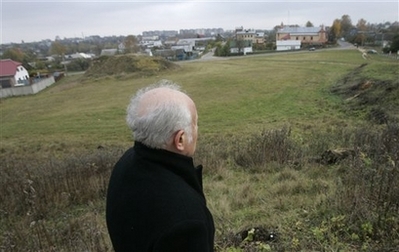Jewish boy became Nazi mascot to survive
Updated: 2007-11-13 12:04
Dzerzhinsk, Belarus -- Among the splinters of a memory shattered by the Holocaust is Alex Kurzem's image of himself as a jolly little boy who liked to climb an apple tree in the family garden, pretending to be a sailor scanning the horizon from the crow's nest.
|
|
Then, at about age 6 or 8, a carefree childhood ends and life becomes a story of horror and deliverance. Germans massacre his Jewish family and he flees into the woods where he endures a bitter winter. He is captured by Latvian soldiers sent by the Germans to kill Jews. They dress him in uniform, make him their mascot and protect him for the rest of World War II. Apparently only one of them knows he's Jewish.
After the war he immigrates to Australia. He forgets his mother tongue, hometown and real name and becomes a Melbourne suburbanite. Finally he sets out to rediscover his identity, but finds more pain than answers. Now gray-haired and in his 70s (he is still unsure of his age), he tells his story in a book, "The Mascot," written by his son and published this month in the United States. But still the search is incomplete.
His quest led him to Dzerzhinsk, a village in Belarus, which he has visited four times and come to believe is his real birthplace. Here lies the mass grave from the 1941 massacre of 1,000 to nearly 2,000 Jews, nearly the entire Jewish population of this small town plus Jews brought from nearby settlements. It has never been exhumed, but he thinks his mother, brother and sister are buried in it.
Kurzem's story, reconstructed with his son's help and supplemented by Associated Press research, shows how the Holocaust story transmits itself through the generations. It also serves as a reminder of the toll it took on children. Only 6 percent to 11 percent of Jewish children caught up in the genocide survived, compared with a third of the adults, according to the US Holocaust Memorial Museum in Washington.
For some children, survival led to a surprising and triumphant rebirth.
Aron Lustiger was hidden with Roman Catholics, converted and grew up to be the archbishop of Paris. Aharon Appelfeld fled a concentration camp at age 8, wandered alone or with other abandoned children through central European forests for years, and later became one of Israel's leading novelists. Thomas Buergenthal survived Auschwitz and a three-day death march at the age of 10. He is now an American judge on the World Court at The Hague.
Kurzem's Holocaust story began when German troops stormed his village and herded the Jews into a ghetto. Some time later Kurzem's mother told the boy that the family would be killed the next day.
|
|
|
||
|
||
|
|
|
|


